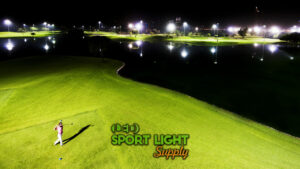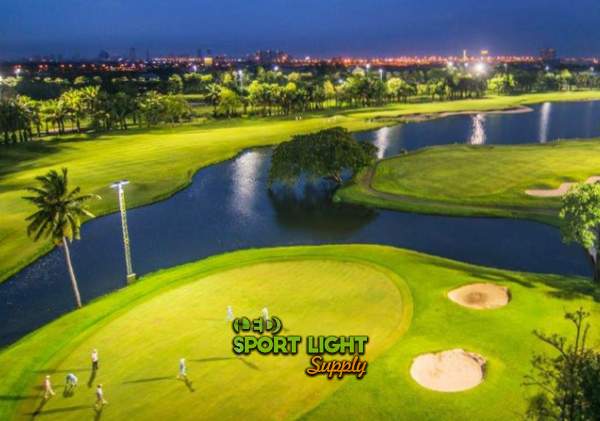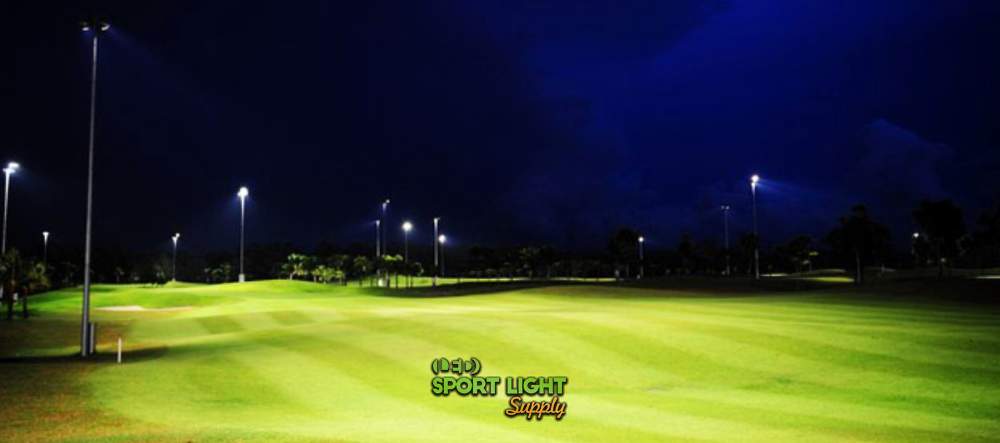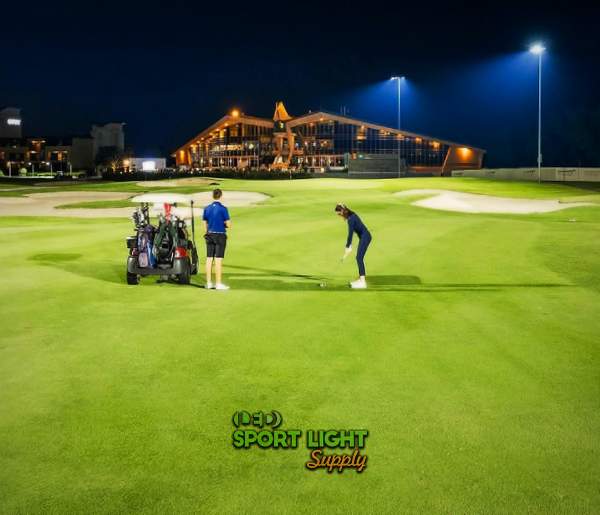
Golf is a sport that heavily relies on visibility, precision, and player comfort. Whether played in the early hours of the morning or under the night sky, the right lighting conditions can significantly impact a golfer’s experience on the course. With advancements in technology, lighting solutions have evolved from traditional systems to more efficient and effective options like LED lighting. Beyond providing adequate illumination, the right lighting design ensures that golf courses maintain a balance between aesthetics, functionality, and energy efficiency.
Table of Contents
Toggle Proper lighting on a golf course serves multiple purposes, from enhancing player performance to ensuring safety for both players and visitors. Golf courses are vast areas with different sections like fairways, greens, bunkers, and pathways, each requiring specific levels of illumination to optimize visibility and support gameplay. Designing a lighting system for a golf course is a complex task that requires attention to factors like uniformity, glare reduction, and environmental impact.
Proper lighting on a golf course serves multiple purposes, from enhancing player performance to ensuring safety for both players and visitors. Golf courses are vast areas with different sections like fairways, greens, bunkers, and pathways, each requiring specific levels of illumination to optimize visibility and support gameplay. Designing a lighting system for a golf course is a complex task that requires attention to factors like uniformity, glare reduction, and environmental impact.
To achieve a successful lighting design, it’s not just about brightening the course but about creating an environment where players can focus on their game without being distracted by harsh lighting or shadows. The choice of lighting technology plays a crucial role in achieving these goals, with LED lighting emerging as a preferred option due to its versatile capabilities and sustainability benefits.
The advent of LED technology has transformed the landscape of golf course illumination. Unlike conventional lighting systems, such as metal halide or high-pressure sodium lamps, LEDs offer a host of advantages. Their ability to deliver high levels of brightness with significantly lower energy consumption is one of the most attractive features. LEDs can consume up to 50% less energy compared to traditional systems, leading to substantial cost savings on electricity bills over time.
LEDs also excel in terms of light quality. They provide a clear and crisp illumination, enhancing visibility for players during evening games or under challenging weather conditions. The flexibility to produce light in various color temperatures allows for customized lighting solutions that align with the specific needs of different areas on the course. This adaptability ensures that the course looks vibrant and inviting, whether for daytime events or nighttime play.
One of the distinguishing features of LEDs is their high Color Rendering Index (CRI). The CRI measures a light source’s ability to reproduce colors faithfully compared to natural light. For golf courses, where the landscape’s natural beauty is part of the experience, a high CRI ensures that the grass, trees, and other elements appear true to life. This realistic color representation not only enhances the aesthetics but also aids players in better judging distances and slopes, thus supporting their performance.
Additionally, LEDs are known for their long lifespan, often exceeding 120,000 hours. This longevity reduces the need for frequent replacements, which can disrupt the course’s operation and add to maintenance costs. The durability of LEDs also makes them suitable for outdoor use, where they can withstand exposure to rain, wind, and extreme temperatures.

Uniform lighting is critical for maintaining a consistent playing environment across the course. Uneven lighting can lead to dark patches or shadows, which can distract players or even affect the outcome of their shots. Achieving uniformity involves not just the choice of light fixtures but also their strategic placement and alignment to cover all areas without creating glare or hotspots.
LED technology offers precise control over light direction and intensity, making it easier to achieve even coverage. The adjustable beam angles of LED fixtures allow lighting designers to tailor the spread of light according to the specific needs of each section of the course. This flexibility is particularly beneficial for areas like putting greens, where higher levels of illumination are needed to support detailed play.
The illuminance levels required for golf courses vary depending on the area being lit. For general areas like fairways and roughs, a moderate level of illumination between 50 to 100 lux is usually sufficient. However, for more critical areas such as tees and greens, where players require greater precision, higher levels ranging from 100 to 150 lux are recommended. LEDs are well-suited to meet these requirements due to their ability to provide adjustable and targeted lighting.
With LED lighting systems, course managers have the flexibility to fine-tune the illumination levels according to specific events or weather conditions. This adaptability ensures that the course remains playable and enjoyable throughout different seasons and times of the day.
 One of the main challenges in golf course lighting is controlling glare, which can impair players’ vision and reduce their concentration. Glare occurs when intense light directly enters the eyes, causing discomfort or distraction. Properly designed LED lighting systems can effectively mitigate this issue by directing light precisely where it is needed and using features such as shields and diffusers to reduce the intensity of direct light.
One of the main challenges in golf course lighting is controlling glare, which can impair players’ vision and reduce their concentration. Glare occurs when intense light directly enters the eyes, causing discomfort or distraction. Properly designed LED lighting systems can effectively mitigate this issue by directing light precisely where it is needed and using features such as shields and diffusers to reduce the intensity of direct light.
LED fixtures are designed to minimize upward light spillage, ensuring that light is directed downwards onto the course. This helps in reducing light pollution and prevents glare from affecting not just players but also nearby residents if the course is situated close to residential areas. The use of advanced optics in LED systems allows for better control over light distribution, contributing to a comfortable and glare-free environment.
Beyond improving playability, effective lighting also enhances safety on the course. Well-lit pathways, parking lots, and hazard zones reduce the risk of accidents and help guide players and visitors during evening events. LEDs are particularly effective for safety lighting because of their instant-on capability and ability to maintain brightness levels over extended periods. This ensures that critical areas remain well-illuminated even in low-visibility conditions.
Sustainability is an increasingly important consideration for golf course management, given the growing emphasis on reducing environmental impact. LEDs align well with sustainability goals due to their energy efficiency, long lifespan, and reduced carbon footprint. Unlike traditional lighting systems that may contain hazardous materials like mercury, LEDs are free of such substances, making them safer for both the environment and human health.
LEDs also contribute to waste reduction since their longer life expectancy means fewer replacements are needed. This translates into less waste in landfills and reduced demand for manufacturing resources. Furthermore, the energy efficiency of LEDs leads to a reduction in greenhouse gas emissions, supporting broader environmental conservation efforts.
Golf courses are exposed to harsh outdoor conditions, from heavy rain to intense sunlight. LEDs are built to endure these elements, with high-quality fixtures designed to resist corrosion, UV damage, and other forms of weather-related wear. This durability not only extends the life of the lighting system but also lowers maintenance costs, as fewer repairs and replacements are needed over time.
Regular maintenance, such as cleaning the fixtures and checking for wear, can further extend the life of the system and ensure consistent light quality. Collaborating with experienced lighting designers during the installation phase can optimize the layout to reduce the need for frequent adjustments and repairs.
A successful golf course lighting project starts with careful planning. Working with professional lighting designers and utilizing advanced simulation tools can help determine the optimal placement of fixtures and the appropriate light levels for each section of the course. Simulation tools allow designers to visualize the lighting layout and make adjustments before installation, saving time and resources.
In addition, considering factors like energy consumption, fixture durability, and maintenance requirements during the planning phase can ensure a more sustainable and cost-effective lighting system. The choice of lighting controls, such as motion sensors or dimming options, can further enhance efficiency by reducing energy usage during off-peak hours.
To maintain the benefits of LED lighting, ongoing maintenance is crucial. Regular inspections can identify any issues early, such as damaged fixtures or reduced light output, allowing for timely repairs. Keeping fixtures clean and free from dust and debris ensures that the light output remains consistent and that the course continues to meet safety and visibility standards.
The shift to LED lighting on golf courses brings improved visibility, enhanced player comfort, and greater energy efficiency. With their durability, precise light control, and reduced environmental impact, LEDs offer a sustainable solution for both aesthetics and performance. By investing in thoughtful lighting design, golf courses can elevate the player experience while promoting long-term cost savings and environmental stewardship.
Drop us a line to receive a free lighting design